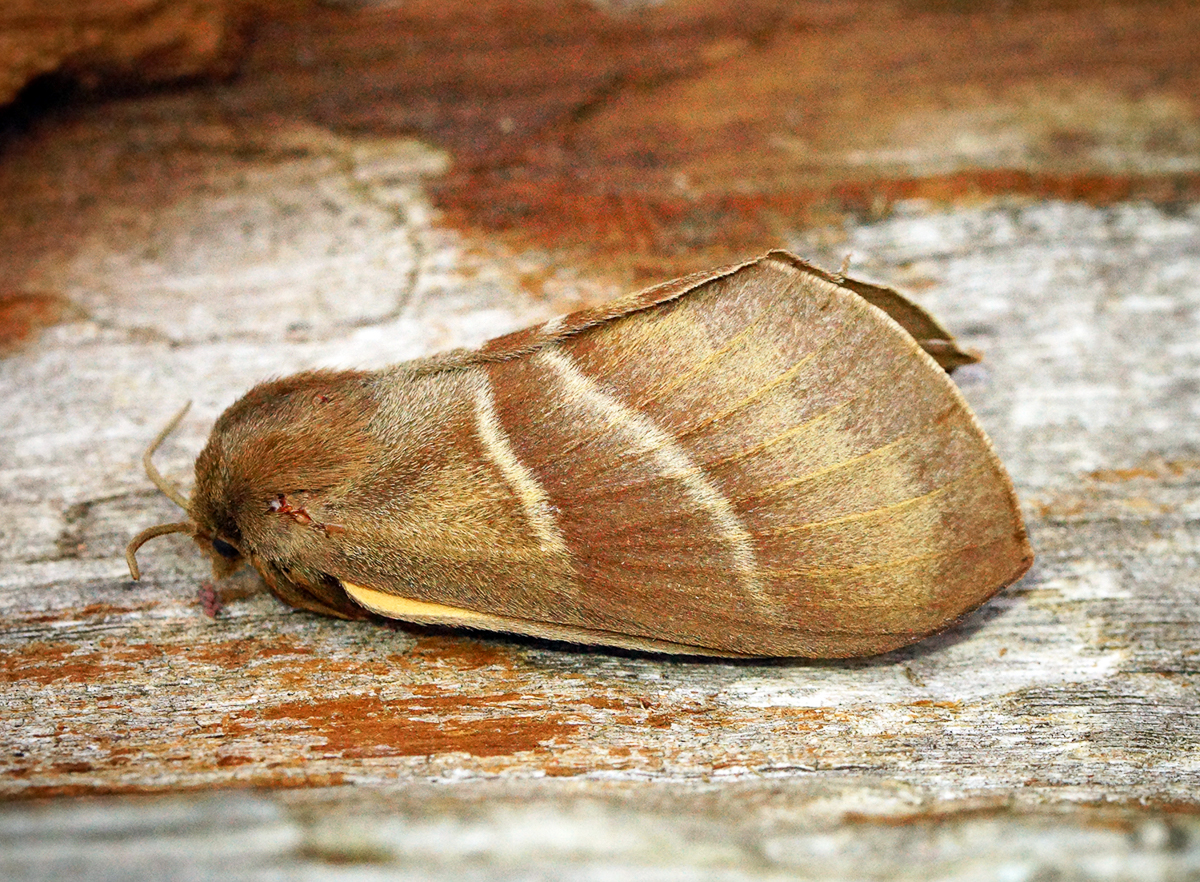
Photo © Ben Sale
Macrothylacia rubi, the fox moth, is a lepidopteran belonging to the family Lasiocampidae. It was first described by Carl Linnaeus in his 1758 10th edition of Systema Naturae.
This species can be found from Western Europe to Central Asia and Siberia. These moths live in open woodlands, moors and prairies.
The wingspan of the male is 40–65 mm. The wings are reddish brown in males while females are usually paler, more greyish in colour and slightly larger than males. Both sexes show two narrow, straight, light-yellow, transverse bands, running across the forewings. The abdomen is thick, grey brown and hairy. The caterpillars can reach a length of about 80 millimetres (3.1 in). They are initially black with bright yellow or orange segments, later they become darker, always covered with blackish and tawny-coloured hairs and with light grey hair on the sides.
It is a univoltine species. Between September and March the caterpillars hibernate in leaf litter. These moths take flight from May to July. The males usually fly in the afternoon and night, while the females fly only at night. Caterpillars feed on heather (Calluna) bramble (Rubus fruticosus), Gramineae, Betula verrucosa, Salix, Populus tremula, Vicia cracca, Trifolium medium, Trifolium pratense, Vaccinium myrtillus, Fragaria, Potentilla and Geranium sylvaticum.
Source: Wikipedia
The primary larval foodplants are Bell Heather (Erica cinerea), Bilberry (Vaccinium myrtillus), birches (Betula spp.), Blackthorn (Prunus spinosa), Bloody Crane's-bill (Geranium sanguineum), Bog-myrtle (Myrica gale), Bramble (Rubus fruticosus), Burnet Rose (Rosa spinosissima), Creeping Cinquefoil (Potentilla reptans), Creeping Thistle (Cirsium arvense), Cross-leaved Heath (Erica tetralix), Greater Bird's-foot-trefoil (Lotus pedunculatus), Heather (Calluna vulgaris), Knotgrass (Polygonum aviculare), Meadowsweet (Filipendula ulmaria), Pedunculate Oak (Quercus robur), Salad Burnet (Poterium sanguisorba ssp. sanguisorba), Wild Strawberry (Fragaria vesca), willows (Salix spp.) and Wood Sage (Teucrium scorodonia).